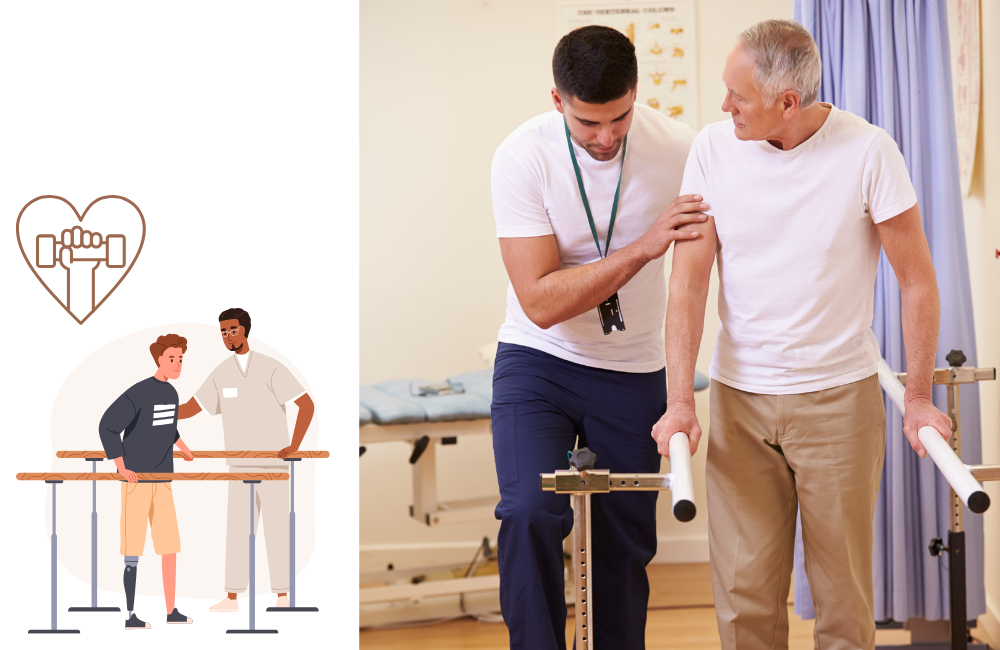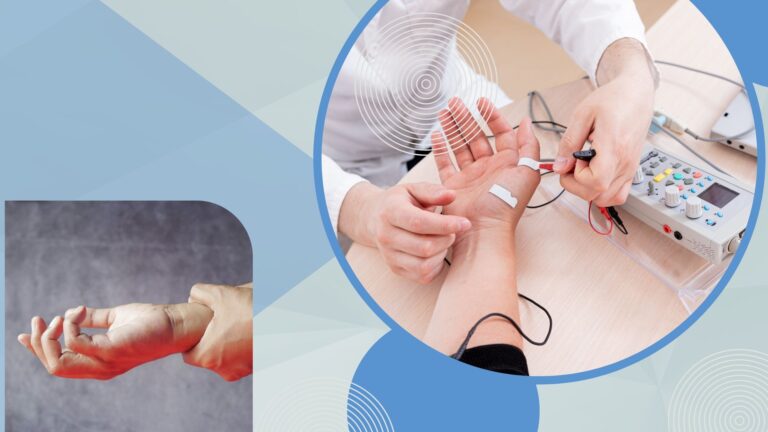Neurological conditions can affect the part of the brain that controls movement, sensation, and sensitivity. For some patients, this can become a physical disability that interferes with not only daily functions but comfort, balance, security, and safety.
At Neurological Medicine PA, we help diagnose and treat neurological conditions for our patients. We also want our patients to be set up for success and get all the assistance they need to live healthy, comfortable lives. As a complementary treatment to standard neurological treatments, physical therapy for neurological conditions can greatly help patients feel more independent and in control.
If you’ve recently been diagnosed with a neurological disorder, are caring for a loved one with a neurological condition, or are looking to improve your symptoms, physical therapy may be able to help.
Discover the benefits of physical therapy for neurological disorder treatment, what neurological conditions can be aided by physical therapy, and how to begin your physical therapy treatment.
Note: Content on neuromedpa.com is not doctor’s advice and should not be taken as such. Always contact your primary care doctor for medical services, diagnosis, treatment, and more.
What Neurological Conditions Can Physical Therapy Help With
ALS
Accompanied by stiffness and other joint pain, physical therapy for ALS patients helps manage chronic pain and worsening symptoms. With the right exercise and treatment plan, patients can maintain mobility and flexibility with less pain during daily movements.
Alzheimer’s Disease
A neurological condition that not only affects memory, there can be physical side effects, too, for Alzheimer’s patients. Physical therapy can help patients maintain their mobility and independence, such as walking, daily activities, and going through routine motions. Caregivers can work with patients to help them have a sense of self and control.
Dementia
Similar to patients with Alzheimer’s disease, dementia patients or their caregivers may seek physical therapy treatments to help them maintain their mobility. This can aid with walking to the bathroom, bedtime or morning routines, or going through daily functions as standard as possible for as long as possible.

Stroke
After a stroke, a primary part of recovery is regaining mobility and control over the body. Physical therapy for stroke patients helps recover balance, movement, strength, and range of motion.
Spinal Cord Injury
Patients who have suffered a spinal cord injury have an increased focus on regaining their independence. Physical therapy for spinal cord injuries, based on personalized assessment, may focus on range of motion, strength, adaptive strategies, and other injury-related adjustments.

Parkison’s Disease
For Parkison’s disease patients, movement can be frustrating. Physical therapy for neurological conditions can help Parkison’s patients overcome these symptoms for better quality of life. The focus is often on posture, strength, flexibility, rigidity, tremors, and walking for better balance and control.
Multiple Sclerosis (MS)
MS can greatly change the way a patient experiences their body. With physical therapy, MS patients can work on overcoming weakness and gaining strength, reducing spasms, improving energy, and working on coordination. As MS symptoms worsen, patients can help maintain their flexibility and coordination of movements.
Traumatic Brain Injury (TBI)
After a traumatic brain injury, patients may experience an inability to move the way they did previously. Physical therapy for neurological conditions can help them regain some or all of the movements they are struggling with, such as limb control, walking, and general mobility.

What are the Benefits of Physical Therapy in Treating Neurological Disorders
- Preventive medicine for managing symptoms or reoccurrences
- Fall prevention
- Motor control
- Independent living or independent daily functions (walking, lying down, etc.)
- Mobility
- Strength
- Balance
- Coordination
- Circulation
- Pain management
- Overall quality of life
- Adjustments to life with ads or different mobility functions
- Managing chronic pain
How Can I Find the Right Physical Therapy Exercises for My Neurological Condition
To find physical therapy treatments for neurological conditions, you will want to talk with your neurologist and primary care doctor for referrals to doctors who are familiar with treatments like yours. Finding someone familiar with treating the diagnosis and symptoms will help greatly in creating a personalized treatment plan.
- Discussions over quality of life, movement, setbacks, symptoms, current treatments
- Evaluation of current status
- Creating personalized physical therapy exercises
Possible Physical Therapy Exercises for Neurological Conditions
Physical therapy for neurological conditions is often a combination of exercise programs, functional training, manual therapy, and education. It is about practicing, working, and learning different movements and stimulations to aid the body.
- Active exercises, working independently
- Active assistance, moving with aid
- Passive activity, having the limbs moved for the patient
- Strength and conditioning, with or without weights
- Coordination practice
- Walking with bars, assistance, and freely
- Massage stimulation
- Heat and cold therapies

Talk with a Neurologist Today
A comprehensive treatment plan can help patients with neurological conditions maintain a greater sense of self and normalcy moving through their diagnosis and disease progression. Neurological Medicine, PA, located in Maryland, can help patients with a diagnosis and treatment plan.
Frequently Asked Questions
What neurological conditions can benefit from physical therapy?
Physical therapy can help manage symptoms of ALS, Alzheimer’s disease, dementia, stroke, spinal cord injuries, Parkinson’s disease, multiple sclerosis (MS), and traumatic brain injuries (TBI). Physical therapy focuses on mobility, strength, and balance that improve symptoms of these conditions.
How does physical therapy improve neurological disorder symptoms?
Physical therapy helps with motor control, balance, coordination, strength, circulation, pain management, and independent movement. It also aids in preventing falls and managing chronic pain.
What types of exercises are included in neurological physical therapy?
Exercises may include active and assisted movements, strength training, coordination practice, walking exercises, massage therapy, and heat or cold therapy.
How do I find the right physical therapy for my neurological condition?
Consult your neurologist or primary care doctor for a referral to a physical therapist experienced in treating your specific condition. A personalized treatment plan will be developed based on your symptoms and mobility goals.
Can physical therapy help after a stroke?
Yes, physical therapy plays a key role in stroke recovery by improving balance, movement, strength, and range of motion to help regain independence and function.

Neurological Medicine, P.A.
Neurological Medicine, P.A., provides comprehensive diagnostic and treatment services to patients with conditions affecting the brain, spinal cord, nerves, and muscles. We have been serving the Prince George’s and Montgomery County area since 1975, with two offices: Greenbelt and Laurel. We offer complete adult neurological care as well as in-office neurodiagnostic studies.
- Neurological Medicine, P.A.
- Neurological Medicine, P.A.
- Neurological Medicine, P.A.
- Neurological Medicine, P.A.



